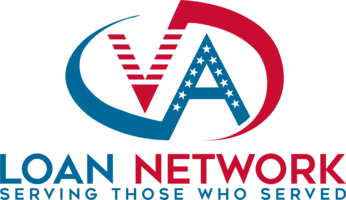In this Article
What Is a VA Rate Buy Down?
A VA rate buy down involves paying “discount points” at closing to reduce the interest rate on your VA mortgage. It’s basically an upfront investment to shrink your monthly payment over the life of the loan. Each discount point typically costs 1% of the total loan amount. For example, if you’re borrowing $300,000, one discount point may cost around $3,000.
The Department of Veterans Affairs (VA) guarantees a portion of home loans for qualifying veterans, active-duty service members, and eligible spouses, allowing them to secure mortgages with favorable terms. Since VA loans already boast no down payment in most cases and no private mortgage insurance, the decision to buy down the rate might look attractive—especially when mortgage rates are high. But it’s important to understand the details and to run the numbers carefully before committing your cash.
How Mortgage Points Work for VA Loans
When you decide to purchase points for a VA mortgage, you’re prepaying interest to get a lower rate for the life of your loan. Let’s say your lender quotes you a 7% interest rate with no points. If you buy one point, your rate may drop to 6.75%. Buy two points, and you might get 6.5%. While these aren’t exact figures—they vary by lender and market conditions—they demonstrate how mortgage discount points function.
Because you’re paying more at closing, you’ll spend less each month on your mortgage payment. Whether this strategy is wise depends on how long you plan to remain in the home and how much money you have available for closing costs. If you only plan to live in the house for a few years, you may never see the full benefit because you won’t be around long enough to recoup the points you purchased. On the other hand, if you expect to stick around for the long haul, it might save you a bundle.
Pros and Cons of Buying Down Your VA Loan Rate
Everyone’s situation is unique, so a VA rate buy down could either be an excellent money saver or an unnecessary expense. Below are some pros and cons to help you weigh the potential benefits and drawbacks:
- Pros: Lower monthly payments, reduced lifetime interest costs, potentially easier budgeting, and possibly a quicker path to building equity.
- Cons: Requires higher upfront costs, uncertain breakeven if you move soon, money you spend on points could be allocated elsewhere (emergencies, renovations, etc.).
A helpful first step is comparing what your payments might look like with and without buying down the rate. Check out the example below:
| Scenario | Interest Rate | Monthly Principal & Interest | Approx. Cost of Discount Points |
|---|---|---|---|
| No Rate Buy Down | 7.00% | $1,995 | $0 |
| 1 Point | 6.75% | $1,945 | $3,000 |
| 2 Points | 6.50% | $1,896 | $6,000 |
These numbers are strictly examples and will vary based on your loan amount, lender, and credit profile. However, the table gives you an idea of the monthly payment difference relative to the initial cost of the discount points.
Factors to Consider Before Buying Points on a VA Loan
You can think of buying points like making a mini investment in your mortgage. There’s a “break-even” point—how long it’ll take for your monthly savings to outweigh the upfront fees. Before you commit, consider:
- How long you’ll stay in the home: If your timeline is short, paying for points may not pay off.
- Your current financial situation: Can you afford the extra closing cost without jeopardizing your emergency fund?
- Overall interest rate climate: If you suspect rates might drop soon, refinancing later could be an alternative option.
- Future plans for the property: If this is an investment property or you plan to sell soon, weigh if the monthly savings will matter enough.
In many cases, the decision to buy down your VA loan rate hinges on how soon you’ll break even and start truly saving. Review the table below to see an example of how break-even can play out.
| Points Purchased | Monthly Savings (Approx.) | Upfront Cost | Months to Break Even |
|---|---|---|---|
| 1 Point | $50 | $3,000 | 60 Months |
| 2 Points | $100 | $6,000 | 60 Months |
In this scenario, a single point or two points have roughly the same break-even timeframe, around five years. If you’re planning to stay in your home well beyond that, you stand to benefit; if not, you risk losing money.
When It Makes Sense to Buy Down Your VA Rate
A VA rate buy down may be a smart move if you have enough cash to handle the additional upfront expense and don’t mind tying up that money in your mortgage. It also helps if you’re fairly confident you’ll be in the home for several years—preferably beyond the break-even mark.
Certain buyers, such as those who’ve sold a previous home and pocketed some equity, might use that equity to purchase discount points on their new mortgage, effectively lowering their monthly payment for many years to come. Similarly, if you have some extra savings and want to reduce your monthly bills for budget reasons, a buy down can offer peace of mind.
Additionally, if interest rates are predicted to remain high for the foreseeable future, locking in a lower rate now—by buying it down—can protect you from rate hikes. Although you could refinance if rates drop, that process involves additional closing costs and paperwork later on.
When It Might Not Make Sense
On the flip side, there are situations where buying down the rate might not be the right call. If you’re using most of your cash reserves just to cover the discount points, you could be left without an emergency fund. That could be risky if an unexpected expense hits right after closing.
It’s also less likely to pay off if you plan to move or refinance in just a couple of years. Since the time to break even can be around five years for many borrowers, you might not recoup the funds you spent on points if you sell or refinance too soon.
Last but not least, some borrowers prefer to keep their cash on hand for renovations or investing. If, for example, using that money for a kitchen remodel would increase the home’s value or your enjoyment of the property, that might be a better use of funds than discount points.
Steps to Decide If You Should Buy Down the Rate
If you’re still on the fence about purchasing discount points on your VA loan, here’s a quick step-by-step guide to help you make an informed decision:
- Evaluate your budget: Check how much cash you have for closing. Will buying points strain your finances?
- Get multiple rate quotes: Different lenders offer different pricing for points, so compare at least 2–3 quotes.
- Calculate break-even: Ask your lender to show you how long it will take to recoup the cost of points in monthly savings.
- Consider your timeline: If you don’t plan to stay beyond the break-even point, you may want to skip buying down the rate.
- Account for future rate environment: Think about whether you’d likely refinance if rates drop.
- Balance other needs: Do you have urgent repairs or investments that might outweigh the benefit of lower monthly payments?
Remember that there’s no one-size-fits-all answer. A savvy move for one person might be a costly misstep for another. The key is running the numbers and being honest about your financial goals and living situation.
Frequently Asked Questions
1. Are discount points on a VA loan tax-deductible?
Discount points may be tax-deductible as mortgage interest in the year you pay them or over the life of the loan. However, tax laws vary, and eligibility can depend on whether you itemize deductions and meet IRS guidelines. Always consult a tax professional for personalized advice.
2. How many discount points can I buy on a VA loan?
Typically, lenders allow homebuyers to purchase up to four discount points, but policies vary. Each point usually costs 1% of the loan amount. Ask your lender for details on point options and the corresponding interest rate reductions to see what fits your budget and homeownership goals.
3. Will buying points lower my closing costs?
No. Buying points actually increases your closing costs because you’re paying more money up front to secure a lower interest rate. Although your monthly payment may shrink, you’ll need enough cash on hand to cover the cost of the points in addition to other standard closing expenses.
4. How do I know if I should buy down my VA loan rate?
You should weigh factors such as how long you’ll stay in the home, your available cash, and your break-even point. If the savings from a lower rate surpass the upfront cost of the points within your timeframe, it could be beneficial. Otherwise, you might be better off avoiding the extra expense.
5. Are all VA lenders required to offer a rate buy down?
No. Lenders have varying policies and fee structures, so they aren’t universally mandated to offer the same discount points or rates. While most lenders do allow a VA rate buy down, the terms, costs, and rate reductions differ. It pays to shop around and compare your options.
6. Can I roll the cost of points into my VA loan?
Generally, you cannot roll discount points into the loan amount on a VA purchase loan. You need to pay them out of pocket at closing. However, if it’s a VA Interest Rate Reduction Refinance Loan (IRRRL), some costs, including certain points, might be financed. Always double-check with your lender.
7. Is it better to make a larger down payment or buy points?
This depends on your financial goals. A larger down payment reduces your principal, potentially lowering your payment and total interest. Meanwhile, buying points specifically decreases your interest rate. If you have substantial cash, you might combine both strategies—but always calculate each scenario’s benefit to determine which offers the best long-term value.
8. Can I refinance if rates drop after buying down my VA loan rate?
Yes. Even if you buy down your VA loan rate, you can still refinance later. However, the points you bought won’t transfer. Refinancing involves new closing costs and potentially another decision about buying points. If you think rates will significantly drop soon, you may want to reconsider paying for points up front.


